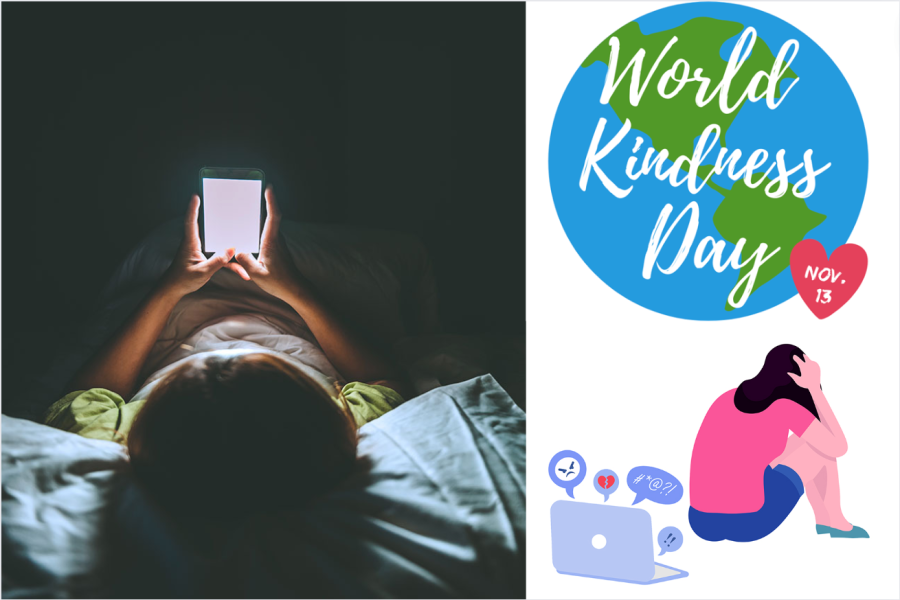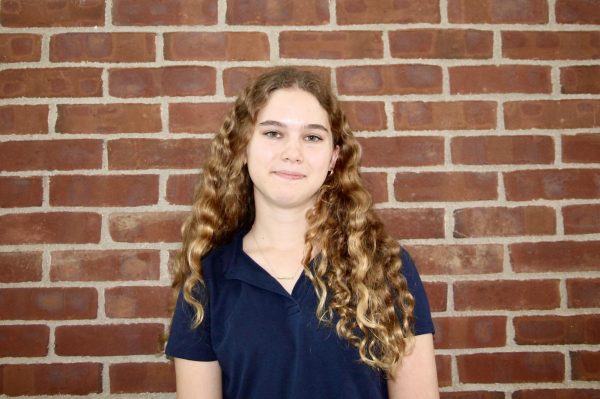Digital footprint and socializing online have now become more mainstream than ever. Due to its prevalence, social media continues to impact people’s lives both positively and negatively, and the number of people it affects is increasing steadily, according to ourworldindata.org. On World Kindness Day, November 13, the Sacred Heart Greenwich community, in addition to communities worldwide, must not only acknowledge the value of spreading kindness around campus but also learn ways to be courteous while online. Treating others respectfully online can begin with identifying the holiday’s underlying message of eliminating unkind behaviors such as cyberbullying.

In 1998, the World Kindness Movement introduced the international holiday World Kindness Day in order to prioritize empathy and compassion, according to savethechildren.org. While the movement initially aimed to remind the world to consistently treat others with compassion, with social media’s rising popularity and interaction via devices, it is now integral to learn how to translate acts of altruism and understanding onto a screen.
A study in 2022 showed that 49 percent of teenagers have reported experiencing at least one of the six behaviors of cyberbullying. This harassment stemmed mostly from other users calling the respondents offensive names or spreading false rumors about them, according to pewresearch.org. Additionally, many teenagers also feel that social media can provide a platform for setting unrealistic expectations about their appearances and everyday lives, according to publichealth.columbia.edu. It is crucial that social media users be aware of others’ perceptions of the content they share and only post things that embody the message of World Kindness Day.
In order to solve problems such as the collective issue of cyberbullying, the first step is to recognize the prevalence of the negativity that is present online. Sophomores Annie Slocum and Arianna Chin are members of the Digital Wellness Task Force, a group of students that works to educate the Sacred Heart community about social media usage. Annie emphasized the consequences of social media’s toxic standards and unrealistic expectations.
“Cyberbullying, as well as certain parts of the social media environment can make people feel like they are not enough,” Annie said. “These elements can lead people to believe that they are not as good as others, but in reality, that is not the case.”
Annie also discussed the significance of maintaining a supportive and healthy environment online. She highlighted the influence of recognizing these issues to bring a positive community to the internet that does not seek to target others. The influence of these actions directly correlates to the World Kindness Movement’s mission to create kinder societies around the world.
“First recognizing the problem and educating people about what these problems are, in addition to raising awareness about them,” Annie said. “And then by everyone doing their own part of being positive can help have a larger impact on the community.”

Although cyberbullying and negativity are prevalent issues online, some teens argue that social media is a net positive influence on their lives, as it is an outlet to showcase creativity and stay connected with friends, according to CNN and forbes.com. Additionally, users who take the time to curate their social media feeds to filter out negativity feel that social media is an accepting space. These users believe that the need for the internet’s communal shift in mindset is not critical.
If students invest in a positive mindset, social media can serve as motivation for good, spreading positivity beyond a small inner circle of friends. Annie and Arianna connected this motivation to the goals that Sacred Heart’s Digital Wellness Task Force strives to achieve, such as educating students about the effects of social media. Each week the task force produces a new theme about concepts such as constructive uses of social media and ways to acknowledge unfriendly behavior online. Arianna added that remaining mindful about digital footprint could help social media become more of a tool for positive change and less of a platform for bringing others down.
“It can be beneficial if people use it in the right way,” Arianna said. “For example, if they use it to take advantage of spreading positive messages, then social media can become a helpful aspect of our lives.”
It is critical that users portray their authentic selves online and acknowledge unkind or pessimistic messages in the content they see in order to improve social media’s atmosphere. This World Kindness Day, the global online community must take measures to advance digital kindness by performing these small acts of positivity.
Featured Image by Juliet Lannamann ’26




